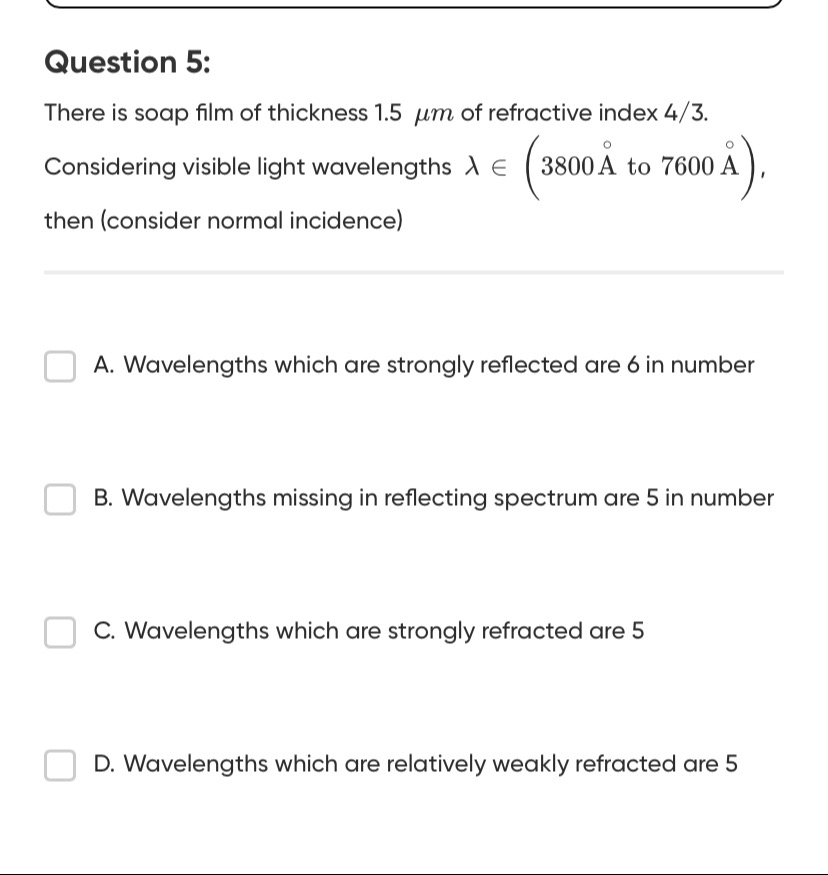Question
Question: There is soap film of thickness 1.5 $\mu m$ of refractive index 4/3. Considering visible light wavel...
There is soap film of thickness 1.5 μm of refractive index 4/3. Considering visible light wavelengths λ∈(3800A˚ to 7600A˚), then (consider normal incidence)

Wavelengths which are strongly reflected are 6 in number
Wavelengths missing in reflecting spectrum are 5 in number
Wavelengths which are strongly refracted are 5
Wavelengths which are relatively weakly refracted are 5
A, B, and C are correct.
Solution
The phenomenon is thin-film interference. For normal incidence, the optical path difference (OPD) between the two reflected rays is 2μt.
Given: Thickness of the film, t=1.5μm=1.5×10−6m Refractive index of the film, μ=4/3 Visible light range: λ∈(3800A˚ to 7600A˚), which is 380nm to 760nm.
Calculate 2μt: 2μt=2×34×(1.5×10−6m)=38×1.5×10−6m=8×0.5×10−6m=4×10−6m=4000nm.
Phase Shifts:
- Reflection at the top surface (air to film): Since μfilm>μair, there is a phase change of π.
- Reflection at the bottom surface (film to air): Since μair<μfilm, there is no phase change.
1. Reflected Light:
-
Constructive Interference (Bright Reflection): 2μt=(m+1/2)λ λ=m+1/22μt=m+0.54000nm. For visible light (380≤λ≤760): m≥4.76 and m≤10.03. Possible integer values for m are 5,6,7,8,9,10. There are 6 wavelengths for constructive interference (strongly reflected). Option A is correct.
-
Destructive Interference (Dark Reflection / Missing in Reflection): 2μt=nλ λ=n2μt=n4000nm. For visible light (380≤λ≤760): n≥5.26 and n≤10.53. Possible integer values for n are 6,7,8,9,10. There are 5 wavelengths for destructive interference (missing in reflection). Option B is correct.
2. Transmitted Light: OPD = 2μt. Total phase difference = λ2π(2μt).
-
Constructive Interference (Bright Transmission / Strongly Refracted): λ2π(2μt)=2nπ⟹2μt=nλ λ=n4000nm. As calculated for destructive reflection, possible integer values for n are 6,7,8,9,10. There are 5 wavelengths for constructive interference (strongly refracted). Option C is correct.
-
Destructive Interference (Dark Transmission / Weakly Refracted): λ2π(2μt)=(2n+1)π⟹2μt=(m+1/2)λ λ=m+0.54000nm. As calculated for constructive reflection, possible integer values for m are 5,6,7,8,9,10. There are 6 wavelengths for destructive interference (weakly refracted). Option D is incorrect.
